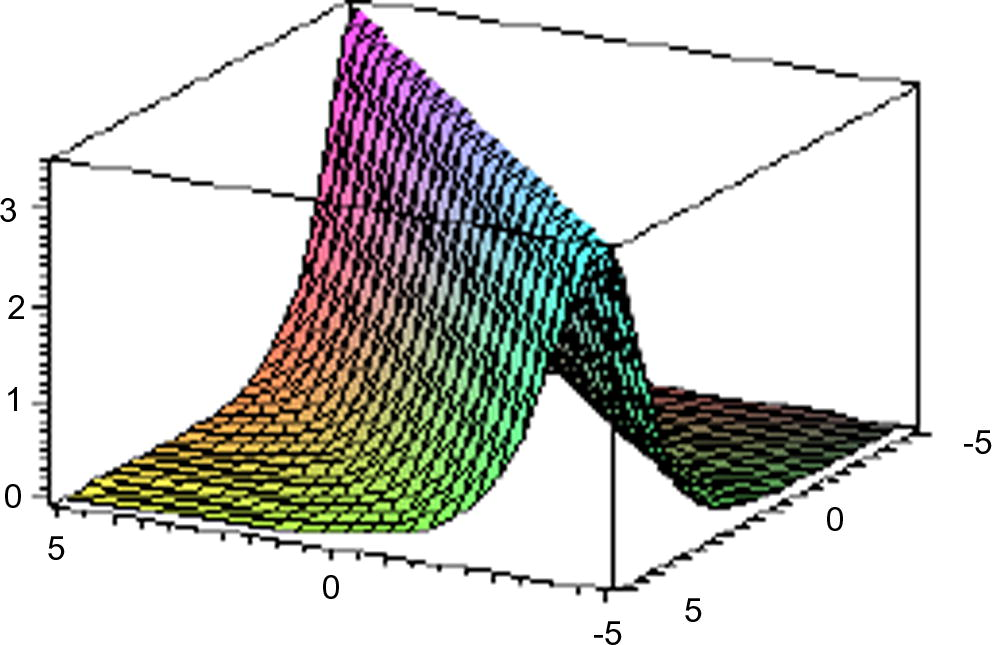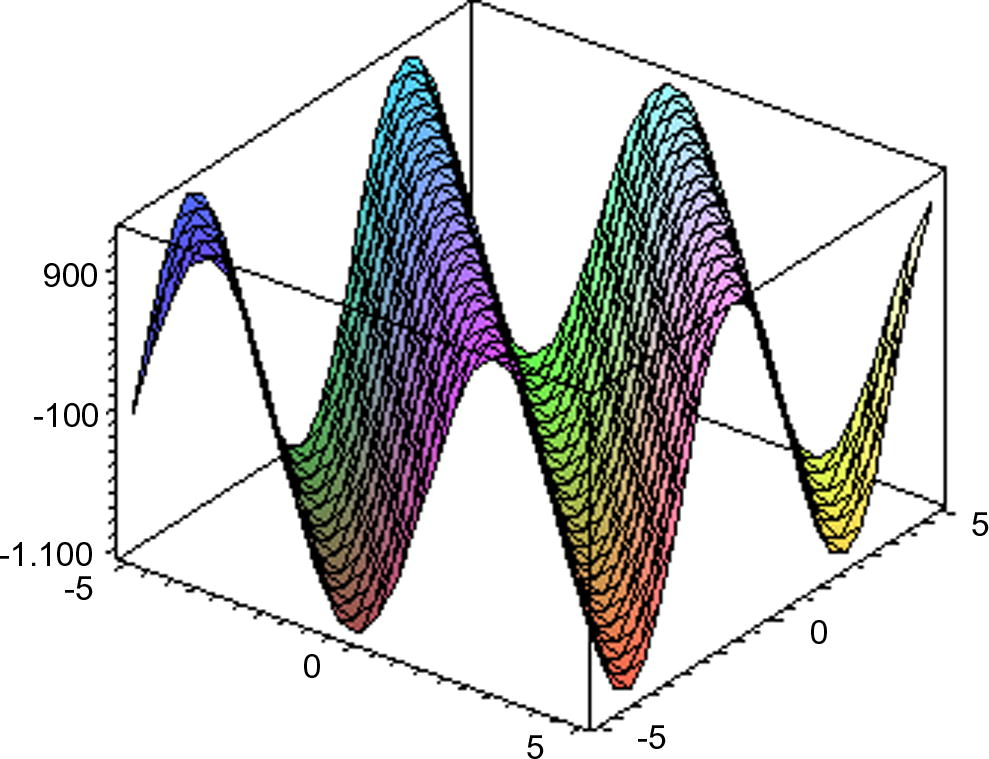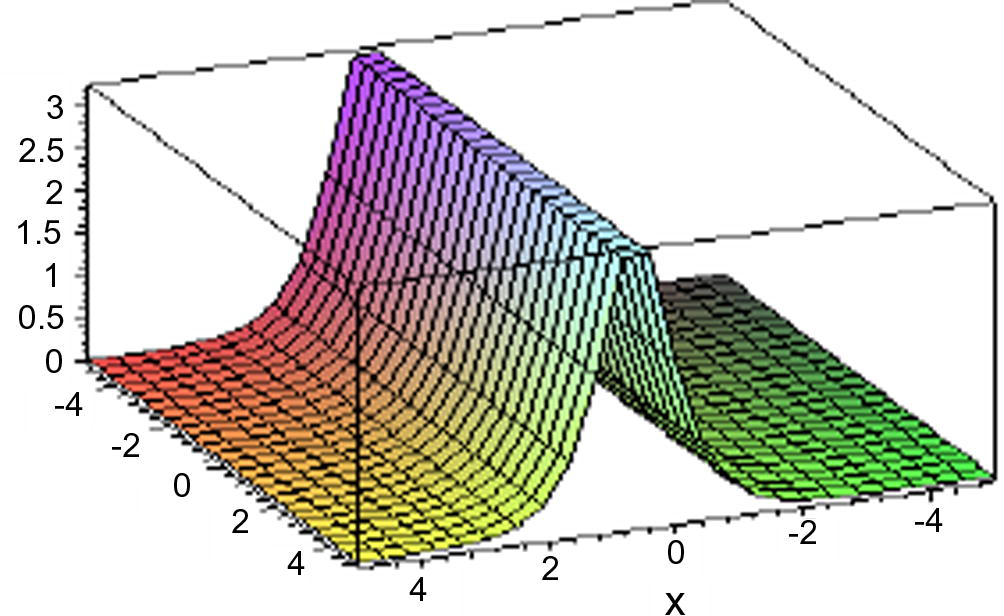Translate this page into:
Exp-function method for traveling wave solutions of modified Zakharov–Kuznetsov equation
*Corresponding author. Tel.: +92 333 5151290 syedtauseefs@hotmail.com (Syed Tauseef Mohyud-Din),
-
Received: ,
Accepted: ,
This article was originally published by Elsevier and was migrated to Scientific Scholar after the change of Publisher.
Abstract
In this paper, we apply the exp-function method to construct generalized solitary and periodic solutions of modified Zakharov–Kuznetsov equation which play a very important role in mathematical physics and engineering sciences. The suggested algorithm is quite efficient and is practically well suited for use in these problems. Numerical results clearly indicate the reliability and efficiency of the proposed exp-function method.
Keywords
Exp-function method
Zakharov–Kuznetsov equation
Nonlinear evolution equations
1 Introduction
This paper is devoted to the study of a nonlinear evolution equation which is called the Zakharov–Kuznetsov (ZK) equation and is of the form
The ZK equation arises in number of scientific models including fluid mechanics, astrophysics, solid state physics, plasma physics, chemical kinematics, chemical chemistry, optical fiber and geochemistry, see (Mohyud-Din et al., 2008; Tascan et al., 2008; Wazwaz, 2008) and the references therein. The basic motivation of this paper is to extend the application of a very reliable and efficient technique which is called the exp-function method for traveling wave solutions of modified Zakharov–Kuznetsov (ZK) equation. The proposed method was developed by He and Wu (He and Wu, 2006) to seek the solitary, periodic and compacton like solutions of nonlinear differential equations; see (Abdou et al., 2007; El-Wakil et al., 2007; He and Wu, 2006; He and Abdou, 2007; Mohyud-Din et al., 2009, 2010, 2008; Noor et al., 2008a,b; Tascan et al., 2008; Wazwaz, 2008; Wu and He, in press, 2007; Yusufoglu, 2008; Zhou, 2007; Zhou et al., 2008; Zhang, 2007; Zhu, 2007a,b) and the references therein.
2 Exp-function method
We consider the general nonlinear PDE of the type
Using a transformation
According to exp-function method, which was developed by He and Wu (2006), we assume that the wave solution can be expressed in the following form:
This equivalent formulation plays an important and fundamental part for finding the analytic solution of problems. To determine the value of c and p, we balance the linear term of highest order of Eq. (4) with the highest order nonlinear term. Similarly, to determine the value of d and q, we balance the linear term of lowest order of Eq. (4) with lowest order nonlinear term (Abdou et al., 2007; El-Wakil et al., 2007; He and Wu, 2006; He and Abdou, 2007; Mohyud-Din et al., 2009, 2010, 2008; Noor et al., 2008a,b; Tascan et al., 2008; Wazwaz, 2008; Wu and He, in press, 2007; Yusufoglu, 2008; Zhou, 2007; Zhou et al., 2008; Zhang, 2007; Zhu, 2007a,b).
3 Solution procedure
Consider the modified Zakharov–Kuznetsov (ZK) Eq. (1)
Introducing a transformation as
, we can covert Eq. (1) into an ODE as
The solution of the Eq. (7) can be expressed as follows:
To determine the value of c and p, we balance the linear term of highest order of Eq. (7) with the highest order nonlinear term
To determine the value of d and q, we balance the linear term of lowest order of Eq. (7) with the lowest order nonlinear term
We can freely choose the values of c and d, but we will illustrate that the final solution does not strongly depend upon the choice of values of c and d. For simplicity, we set
and
, then the trial solution, Eq. (6) reduces to
Substituting Eq. (16) into (7), we have
Equating the coefficients of
to be zero, we obtain
Solution of (18) will yield
We, therefore, obtained the following generalized solitary solution
of Eq. (1)

Depicts soliton solutions of Eq. (1), when
.
In case
and
are imaginary numbers, the obtained soliton solution can be converted into periodic solution or compact-like solution. Therefore, we write
and
, respectively. Consequently, Eq. (20) becomes
where
, and
and
are real numbers, consequently
For periodic or compact-like solutions, the imaginary part in Eq. (21) must be zero, hence
If
and
, then Eq. (6) reduces to

- Depicts periodic solutions of Eq. (1), when
.
Setting , the trial-function (23) is simplified as follows:
Proceeding as before, we obtain
Hence we get the generalized solitary wave solution
of Eq. (1) as follows:

Depicts soliton solutions of Eq. (1) in Case 3.1.2, when
.
4 Conclusion
In this paper, we applied the exp-function method to obtain the generalized solitary and periodic solutions of the modified Zakharov–Kuznetsov equation. It is concluded that exp-function method is a very effective and powerful mathematical tool for finding solitary and periodic solutions of the nonlinear partial differential equations.
References
- New application of exp-function method for improved Boussinesq equation. Phys. Lett. A. 2007;369:469-475.
- [Google Scholar]
- Application of exp-function method for nonlinear evolution equations with variable co-efficient. Phys. Lett. A. 2007;369:62-69.
- [Google Scholar]
- New periodic solutions for nonlinear evolution equation using exp-method. Chaos Solitons & Fractals 2007:1421-1429.
- [Google Scholar]
- Exp-function method for nonlinear wave equations. Chaos Solitons & Fractals. 2006;30(3):700-708.
- [Google Scholar]
- Exp-function method for generalized travelling solutions of good Boussinesq equations. J. Appl. Math. Comput. Springer. 2008;29:81-94.
- [CrossRef] [Google Scholar]
- Mohyud-Din, S.T., Noor, M.A., Noor, K.I., 2009. Some relatively new techniques for nonlinear problems. Math. Probl. Eng., Article ID 234849, 25pp. doi:10.1155/2009/234849.
- Exp-function method for generalized travelling solutions of Calogero–Degasperis–Fokas equation. Z. Naturforsch. A. 2010;65a:78-84. (IF = 0.691)
- [Google Scholar]
- Exp-function method for solving Kuramoto–Sivashinsky and Boussinesq equations. J. Appl. Math. Comput. 2008
- [CrossRef] [Google Scholar]
- Exp-function method for generalized travelling solutions of master partial differential equations. Acta Applicandac. Math. 2008
- [CrossRef] [Google Scholar]
- Traveling wave solutions of nonlinear evolution equation by using the first-integral method. Commun. Nonlin. Sci. Num. Sim. 2008
- [CrossRef] [Google Scholar]
- The extended tanh method for Zakharov–Kuznetsov equation (ZK), the modified ZK equation and its generalized forms. Commun. Nonlin. Sci. Num. Sim.. 2008;13:1039.
- [Google Scholar]
- Solitary solutions, periodic solutions and compacton like solutions using the exp-function method. Comput. Math. Appl.. 2007;54:966-986.
- [Google Scholar]
- Wu, X.H., He, J.H., in press. Exp-function method and its applications to nonlinear equations. Chaos Solitons & Fractals.
- New solitonary solutions for the MBBN equations using exp-function method. Phys. Lett. A. 2008;372:442-446.
- [Google Scholar]
- Application of exp-function method to high-dimensional nonlinear evolution equation. Chaos Solitons & Fractals. 2007;365:448-455.
- [Google Scholar]
- Exp-function method for the Hybrid–Lattice system. Int. J. Nonlin. Sci. Num. Sim.. 2007;8(3):461-464.
- [Google Scholar]
- Exp-function method to solve the nonlinear dispersive k(m, n) equations. Int. J. Nonlin. Sci. Num. Sim.. 2008;9(3):301-306.
- [Google Scholar]
- Exp-function method for the Hybrid–Lattice system. Int. J. Nonlin. Sci. Num. Sim.. 2007;8:461-464.
- [Google Scholar]
- Exp-function method for the discrete mKdV lattice. Int. J. Nonlin. Sci. Num. Sim.. 2007;8:465-468.
- [Google Scholar]







